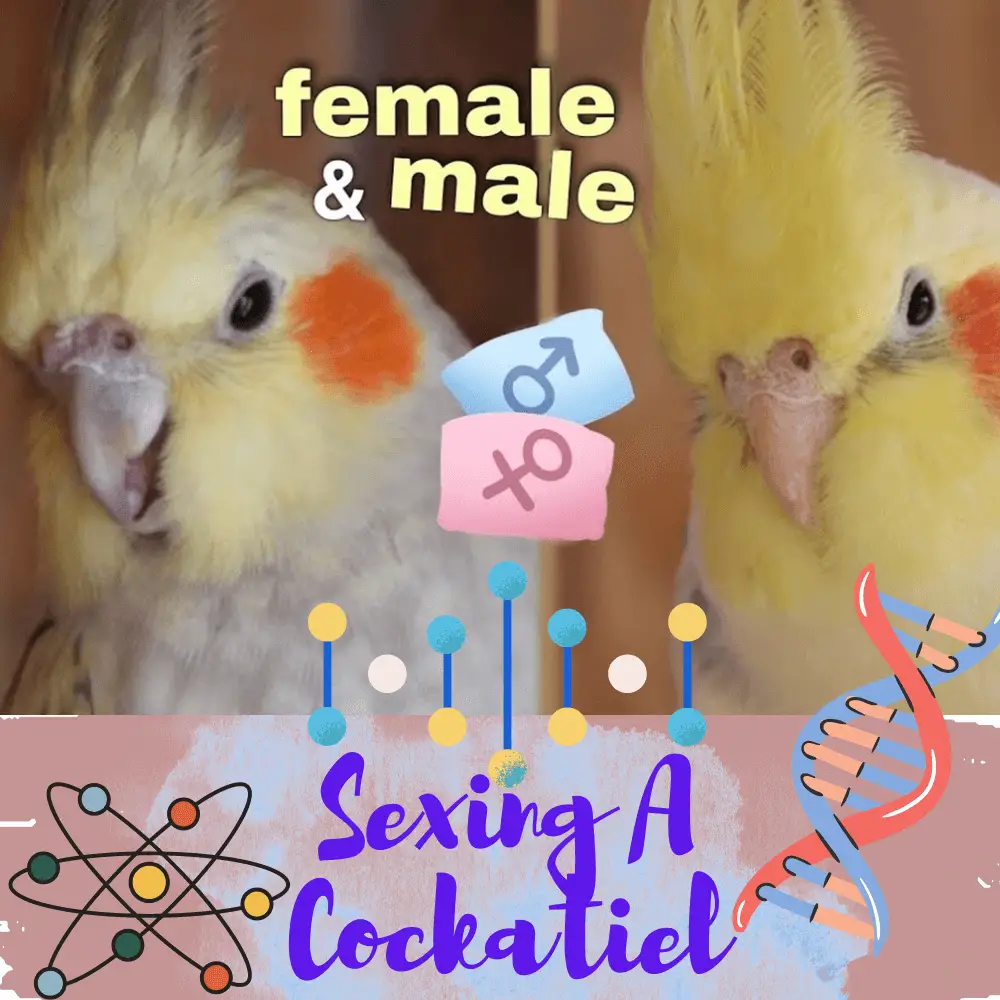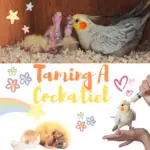
Sexing a cockatiel Parrot Methods and techniques: There are several ways to identify the sex of a cockatiel to recognize males and females.
How to Identify A Cockatiel’s Gender? Is my cockatiel male or female?
DNA sexing
With a minimal error rate although existing, DNA sexing allows you to know with certainty and from an early age the sex of your bird.
However, it is a paid test and requires waiting for a more or less long time. It is possible to inquire with breeders or associations.
To perform a DNA sexing, you must take a feather from your pet and send it to the genetic center that will extract the DNA following a cut at the base of the feather. Then the DNA will be isolated by centrifugation and amplified. Males will have fragments of sexual DNA (the Z chromosome) measuring 372 base pairs while females will have additional fragments of 400 base pairs on the W chromosome.

Sexing to behavior
Between approximately 6 months and 1 year, the cockatiel reaches sexual maturity. Even if it is completely not recommended to have it reproduced at this age, it develops sexual behaviors such as parades or singing. Some attitudes are unique to males: this is the case of parades, heart-shaped wings, or even singing.
However, it is important not to rely on certain behaviors that may be misleading. Indeed, it is quite possible to obtain eggs by possessing only females (the eggs will be clear, and unfertilized). It is also possible to witness sexual behavior between two males.
Sexing via sexual dimorphism

It is important not to rely entirely on the sexual dimorphism of the cockatiel to determine its sex. Indeed, this practice of sexing can be illusory depending on the mutations and the age of the animal. It consists of comparing the physique of male and female individuals to note differences.
In particular, the head, tail feathers (rectrices), and wing feathers (remiges) are examined. In order for sexing to have the best chance of success, it is necessary that the bird is at least 1 year old and has completed its molt.
In the case of the “wild type” (TS) mutation, males have yellow heads and orange cheeks while the female’s head will be grayed out. Some mutations are impossible for sex, this is the case for the variegated for example.
For others, it is possible to observe the presence of streaks under the tail feathers or spots under the feathers of the wings that would be representative of a female. This sexing technique remains unreliable.
Sexing via genetics
Four mutations are related to gonosomes, in other words, they are mutations related to sex. Females cannot carry this type of mutation, unlike males. For example, Cinnamon is a sex-related mutation: either the female is Cinnamon herself, or she is of another mutation and in this case, she does not have the Cinnamon “gene” in her genetics. Conversely, a male can be TS (Wild Type) and carry the Cinnamon in his genes without it being visible to him.
The father passes the mutation on to his daughters. Thus, in a couple consisting of a male Cinnamon and a female TS: all male babies will be carriers of cinnamon and all baby females will be Cinnamon. In other words: all Cinnamon babies will be females!
This method of sexing is effective but requires two constraints: to know and know how to differentiate the mutations of the cockatiel and to know the genetics!
Sexing: methods that do not work
The four sexing methods proposed above have more or less been more or less effective in proving their worth. However, sometimes it is possible to encounter other alternative ways to sexing a cockatiel that is not recognized as effective. So flee anyone who claims to be able to sex your bird by palpating its pelvic bones, depending on the color of its cheeks, its size, or that of its hoopoe!
Do You Have A Male or Female Cockatiel? | How to Determine Cockatiel Gender
SOURCE:Kevin and Krista’s Flock




















